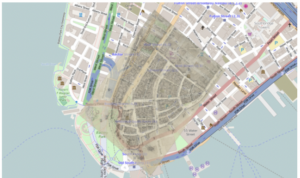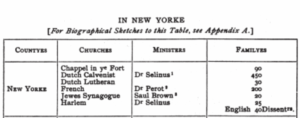Before NYC’s insurgence as a metropolitan hub with a culturally diverse background, white supremacy existed. This concept was propelled by Henry Hudson, who first sailed into the NY harbor. Before his arrival, the Lenni Lenape inhabited Manhatta (known today as Manhattan) and mostly settled in what is known today as Inwood, the Upper East Side, and Chinatown. Other tribes like the Canarsie and the Rockaway also had their homes located around the area. The Dutch built a town at the Southern tip of Manhattan Island, New Amsterdam. The Dutch West Indies Company imported African slaves to be laborers and helped to build a wall that defended the town against English and Indian attacks. The enslaved population is what set the foundation for the Dutch settlement. They also served as the “middle man” between the dutch and native populations. The native population became heated because of the increase in violence triggered by Europeans and their claims of land, property, and title.
When the Dutch came to settle, they were seeking for fur trading posts, because they were aware of how capitalistic the money was. However, NY was considered as a second rate colony because it wasn’t generating as much revenue as other colonies.
One of the white supremacists at the time was Peter Saxon, a religious radical that believed in the teachings of the Dutch church and places rules against integration. In 1654, a group of Jews came from the Dutch colony and were searching for religious freedom, but the whites were highly against the idea. However, the Dutch West India company issued a statement that proclaimed that they were comfortable with anyone being in the colony so long as they aren’t violent. NYC slowly became an incredibly diverse city with at least 18 different languages being spoken in New Amsterdam. It became center of the British empire in the Americas and the second largest port in the Americas.
The Dutch were eventually forced to give up power and they swore allegiance to England. This map shows the settlement of the Dutch and the development of man-made land areas. Next to the map is a table that displays the religious diversity.




